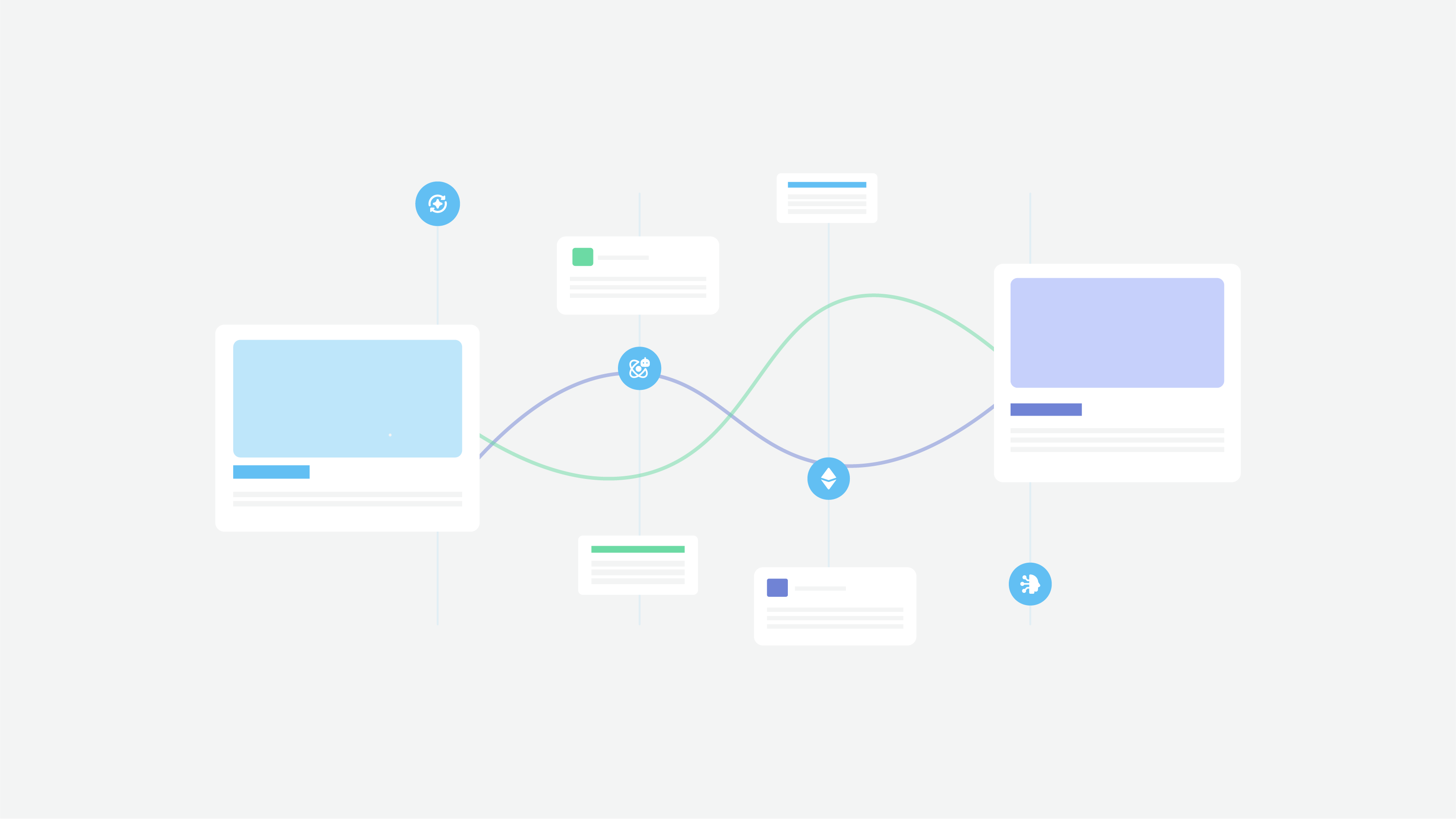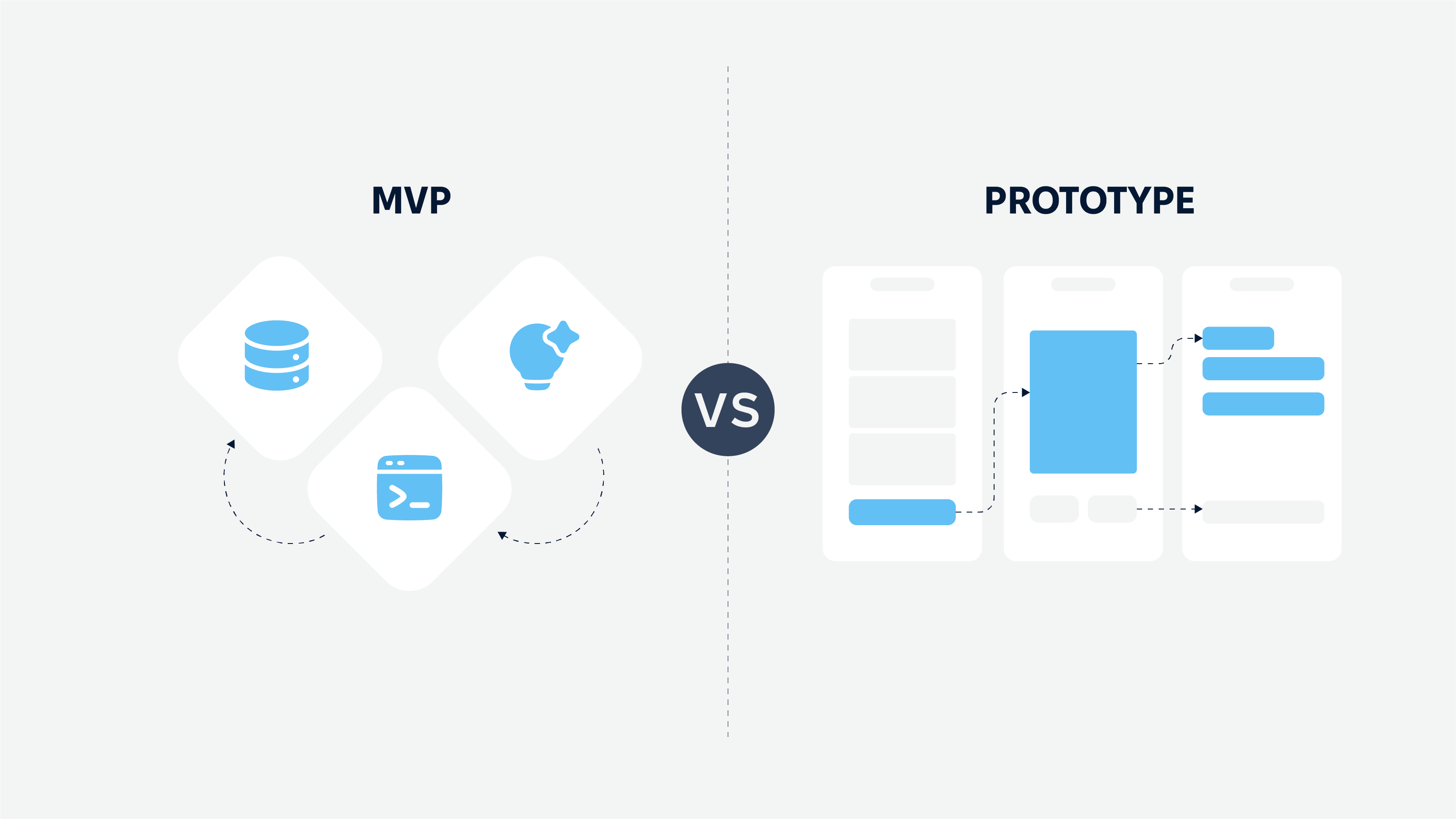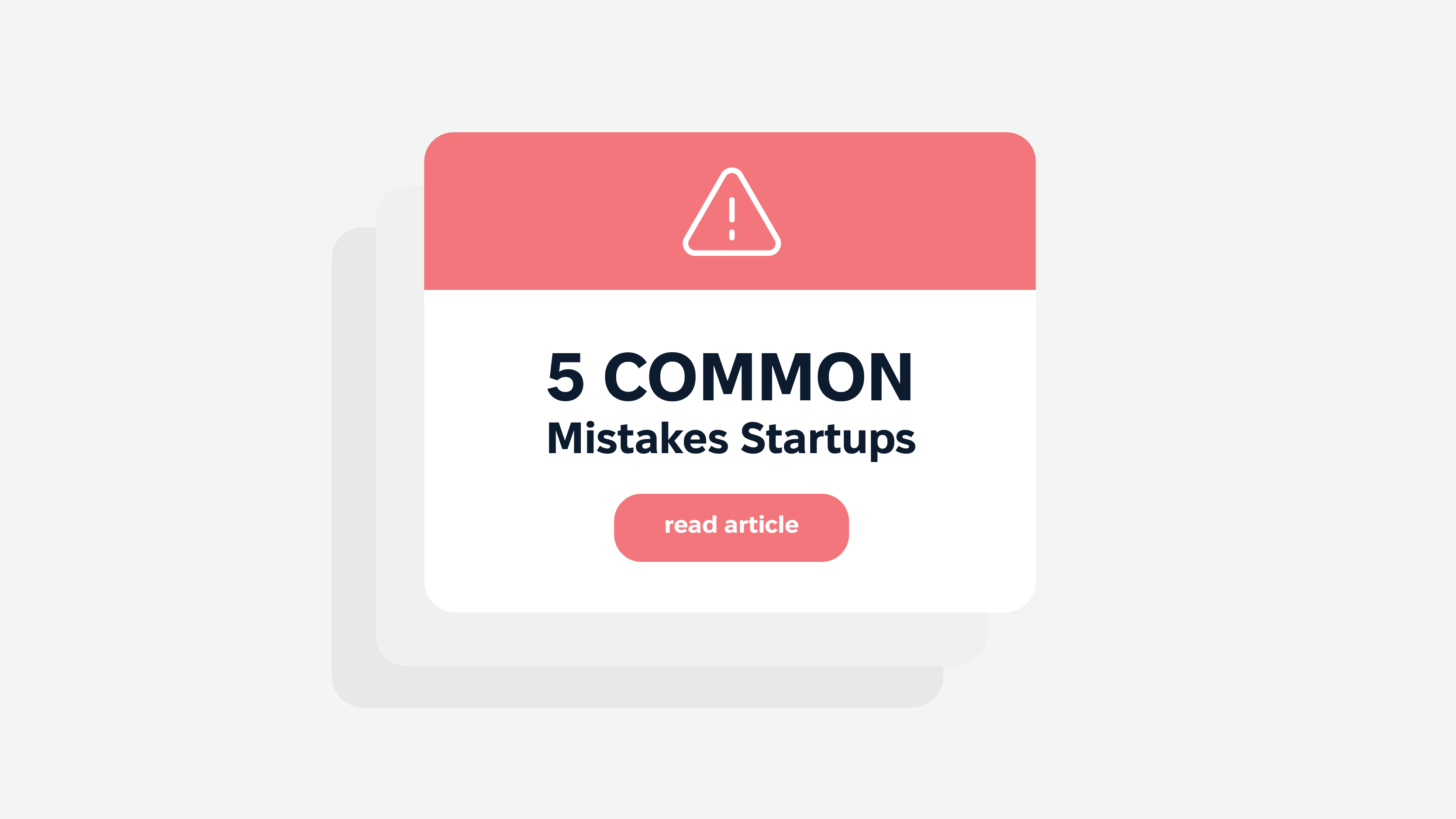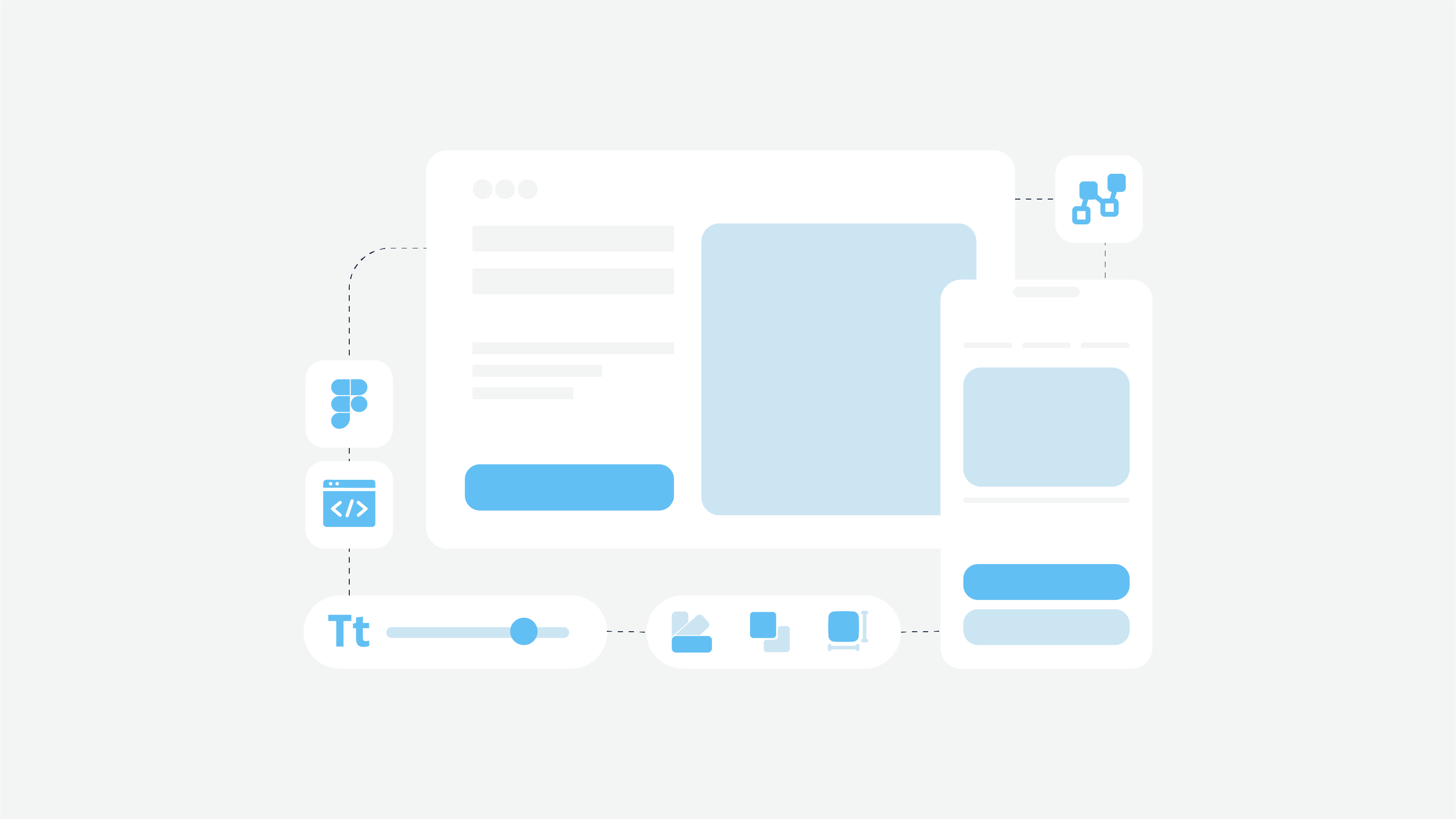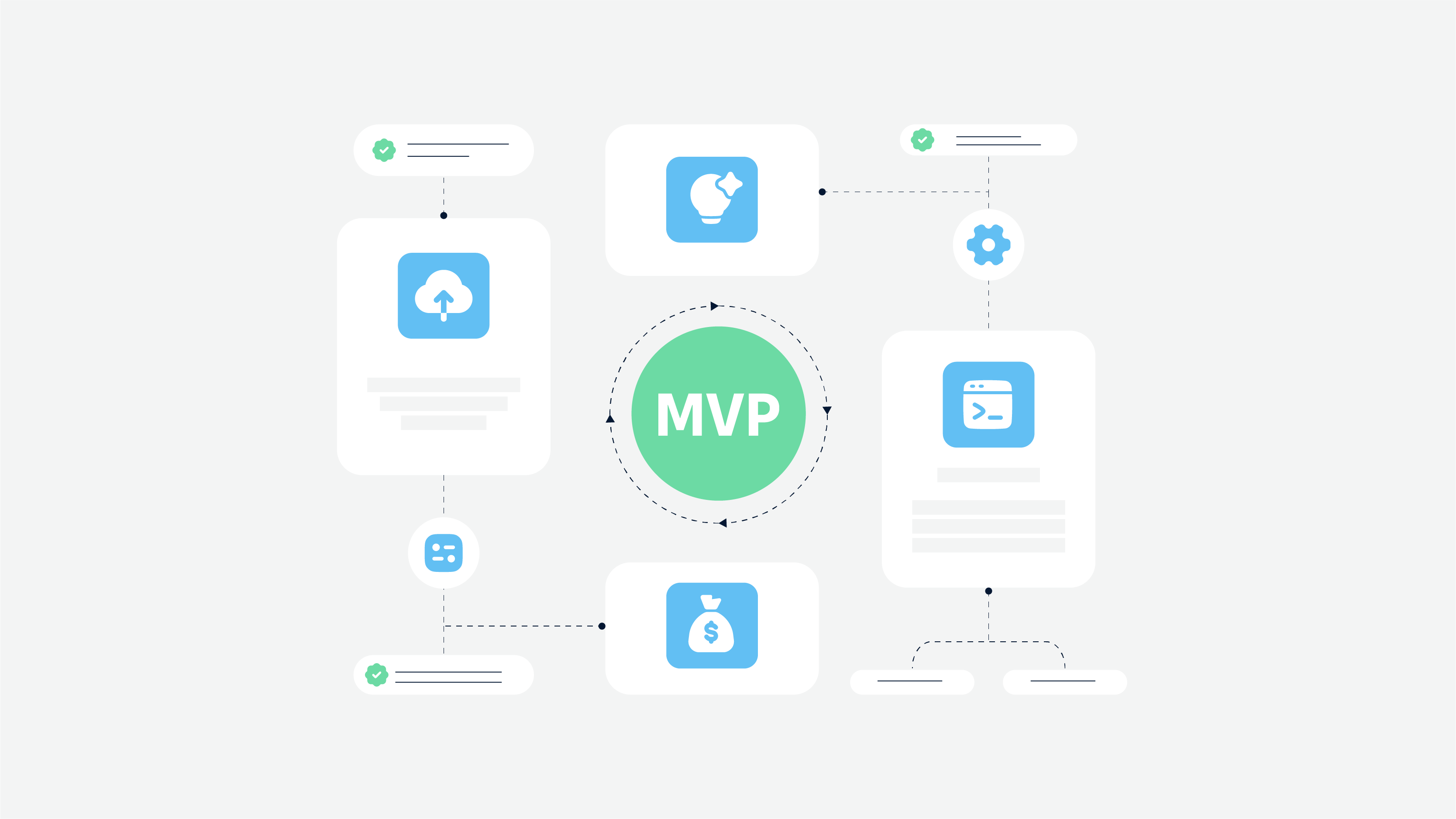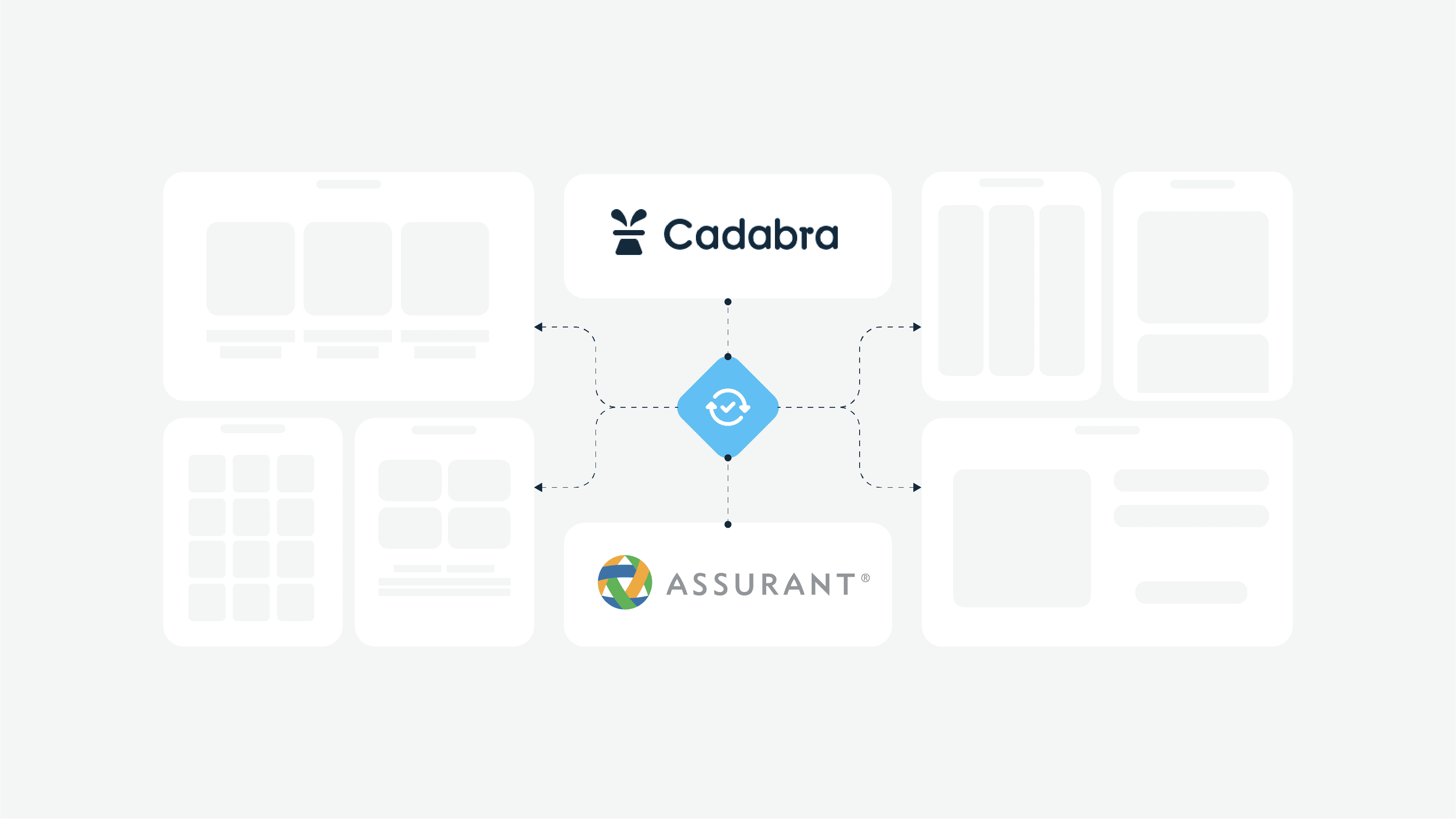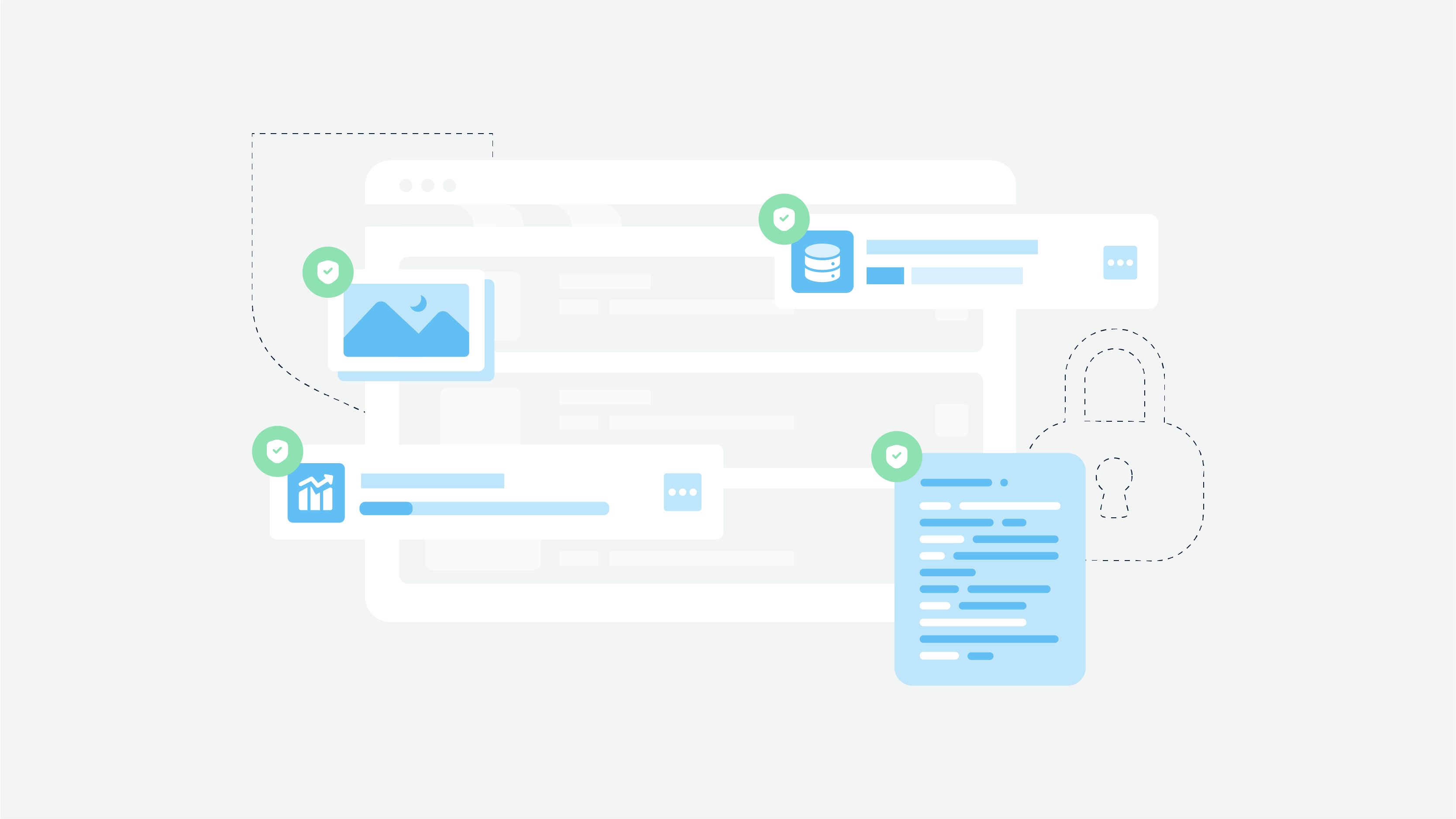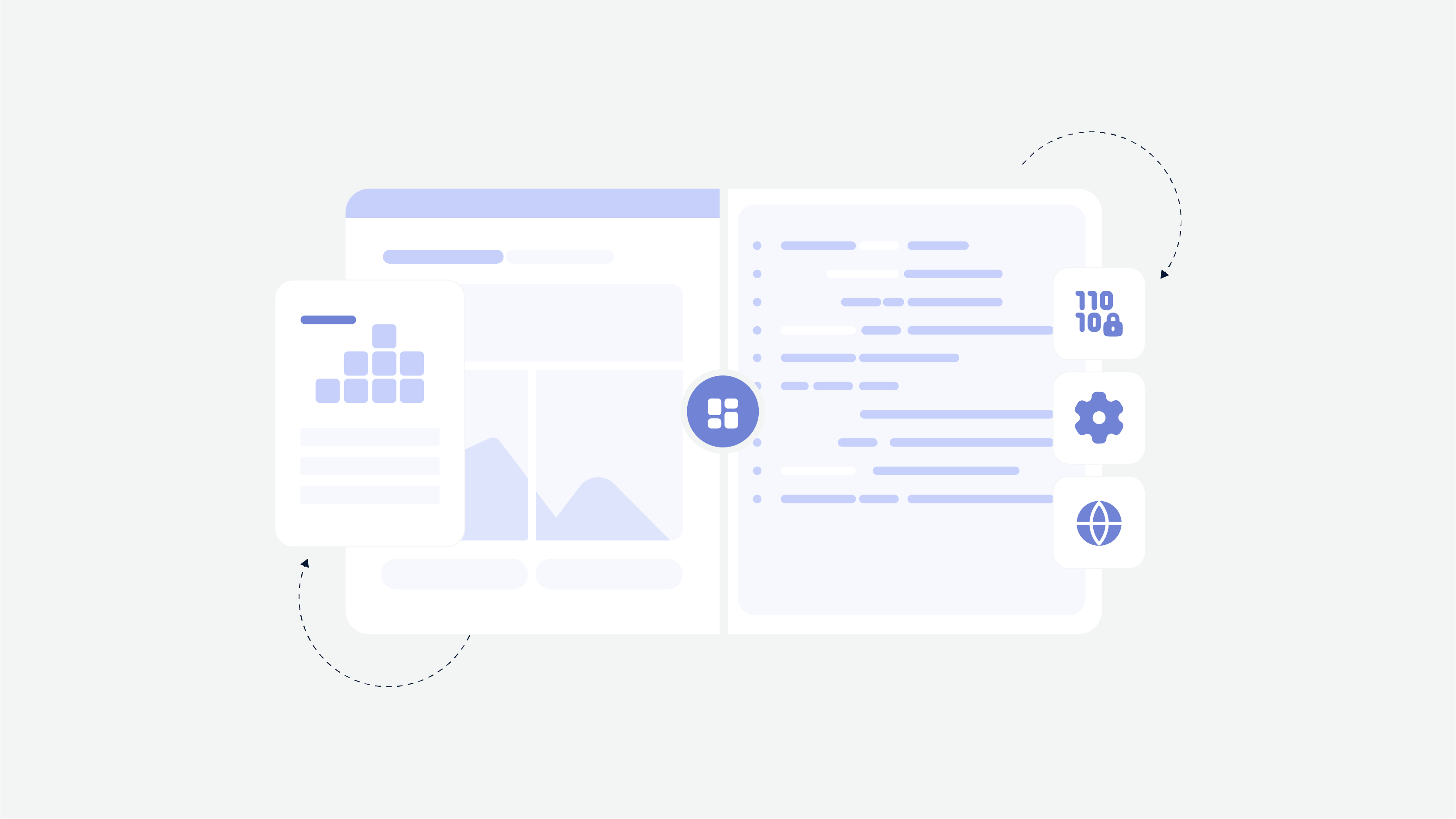Blink, and you might miss the next big breakthrough. In 2025, technology is sprinting at full speed, flipping industries upside down and reshaping the way we do business.
If you think tech adoption used to be slow, consider this: it took the telephone 75 years to hit 100 million users. Mobile phones did it in 16. And then came ChatGPT, smashing that record by reaching 100 million users in just two months. Talk about a fast track to mainstream adoption!
Generational shifts add another layer to this evolution. In 2019, a whopping 93% of Millennials had smartphones, while only 68% of Baby Boomers did. That gap shows how different age groups embrace technology at their own pace, forcing businesses to rethink how they engage customers across demographics. And let’s be real – while Boomers might still be getting the hang of voice assistants, Gen Z is already deep in the metaverse.
As we stand at the threshold of this tech-driven future, one thing is clear: businesses that want to stay ahead need to be adaptable, innovative, and ready to ride the wave of change. Because in 2025, the only thing moving faster than technology is the competition.
Emerging Technology Trends 2025 – What’s Transforming Industries?
AI, automation, extended reality, and blockchain aren’t just making things run smoother; they’re rewriting the rulebook as the most prominent 2025 technology trends. Companies jumping on these trends are soaring ahead, while those dragging their feet risk becoming the next Blockbuster.
Harsh? Maybe. But in a world where digital transformation moves at warp speed, standing still is like moving backward.
1. AI Automation Across Business Functions
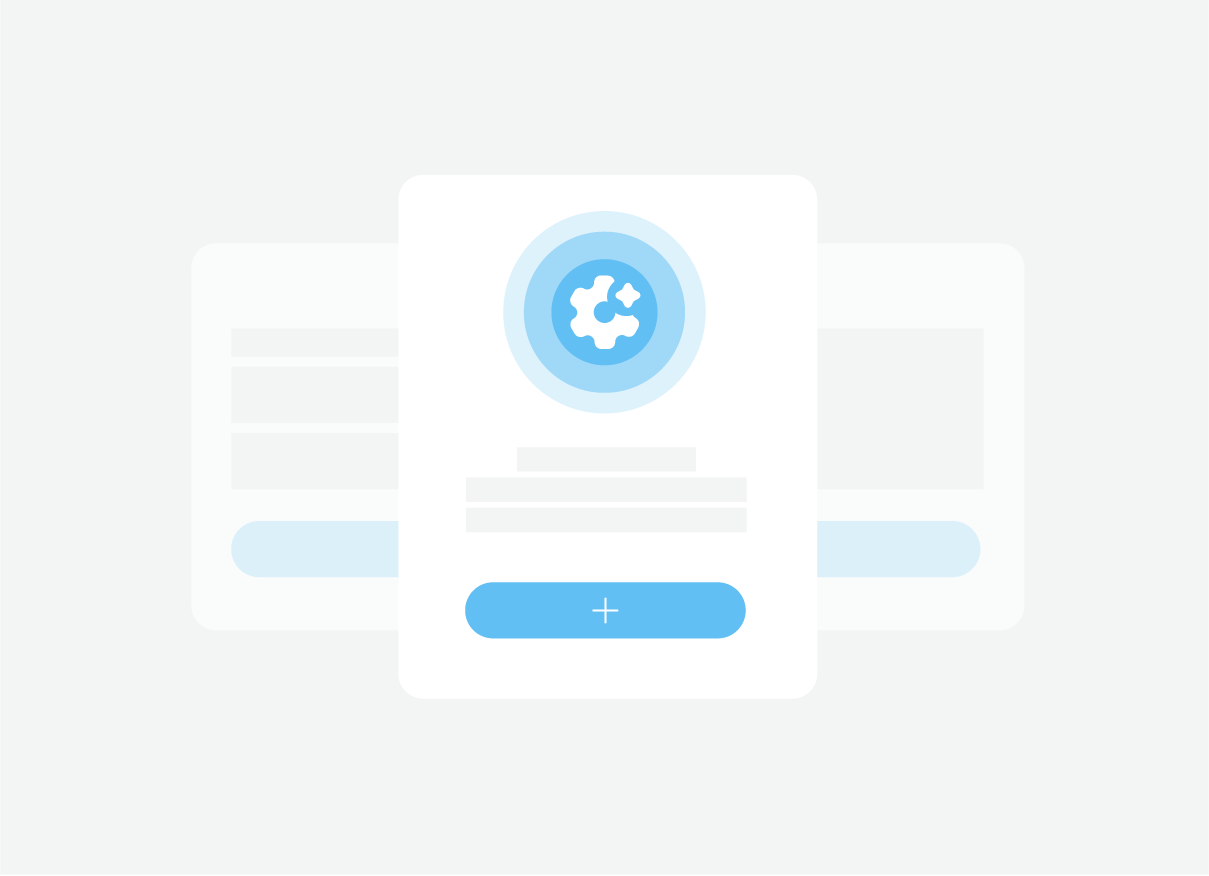
AI solutions are stepping up their game by streamlining processes, taking over repetitive tasks and freeing up humans for more creative work. This isn’t just about efficiency; it’s about transforming how businesses operate. This rapid growth shows how quickly businesses are adopting AI systems and machine learning to streamline operations.
Employee Onboarding
Companies like Hitachi and Texans Credit Union have implemented AI to streamline their onboarding processes, significantly reducing the time and resources required. AI digital assistants and robotic process automation handle routine tasks such as paperwork, system access, and addressing new-hire questions, leading to a more efficient and engaging experience for new employees.
Financial Services and Business Process Automation
UiPath Inc., a leader in robotic process automation, enables financial institutions to automate processes like data entry, customer queries and compliance checks. Despite recent economic challenges leading to a conservative sales forecast, the company’s technology continues to play a crucial role in enhancing operational efficiency.
The result? Faster workflows, fewer errors, operational costs and more time for employees to focus on creative and strategic work. With the AI market in India alone projected to hit $8 billion by 2025, it’s clear that businesses worldwide are going all-in on automation.
Co-pilots for Employees
And then there’s the rise of AI co-pilots – digital assistants seamlessly integrated into everyday software, making employees more productive without them even realizing it.
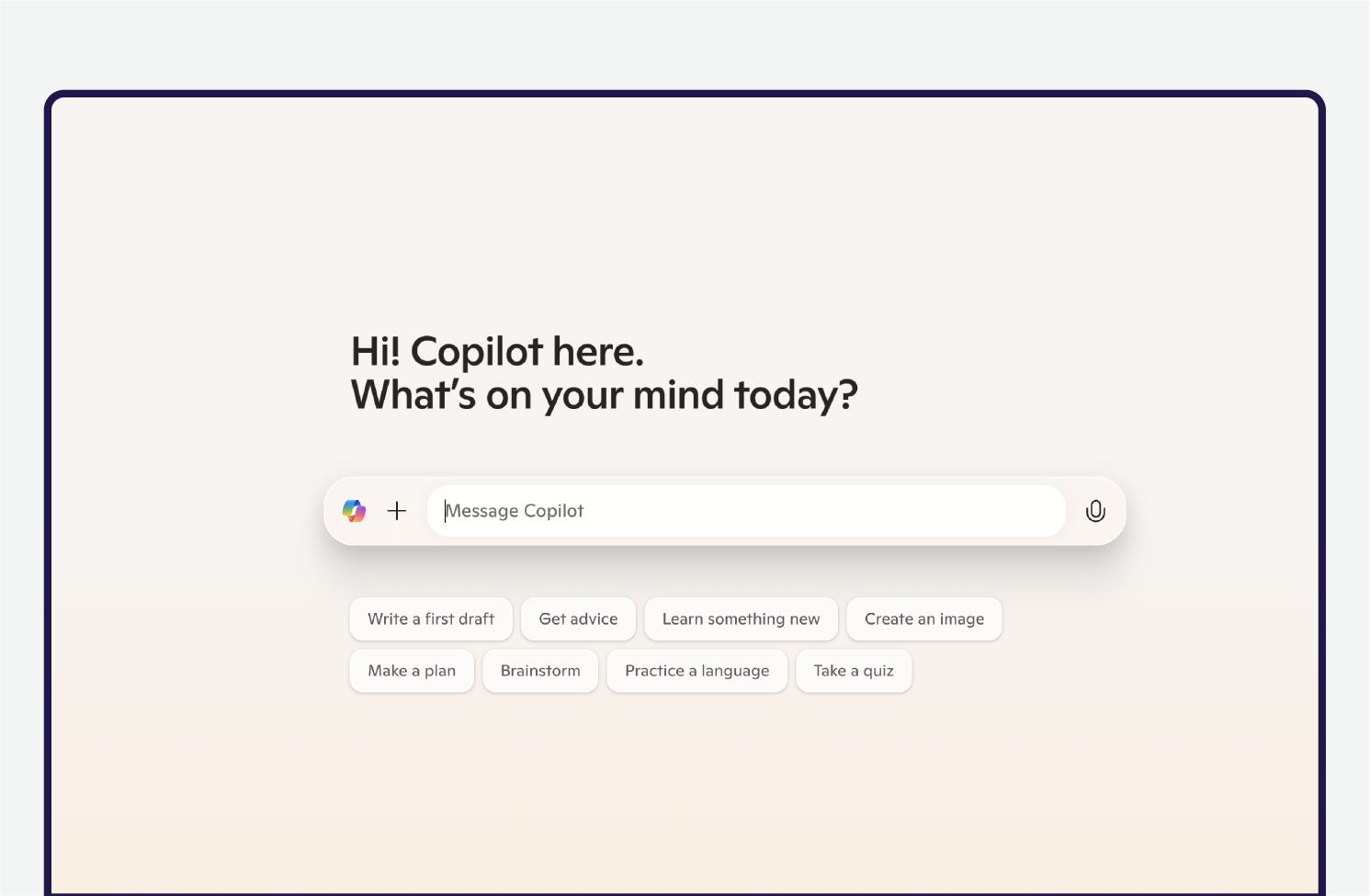
Microsoft’s Copilot in Office 365, for instance, automatically drafts emails, summarizes meetings, and suggests edits in Word and Excel. Over at Salesforce, Einstein AI helps sales teams predict which leads are most likely to convert, effectively turning guesswork into data-driven strategy. These AI-powered sidekicks aren’t replacing humans; they’re making them faster, sharper, and more efficient.
2. Generative AI for Business and Product Development

Imagine having a creative genius in your corner, one that can crank out ideas, designs and redesign, business process automation and even complex strategies at the snap of a finger. That’s generative AI in a nutshell. It’s not just about automation anymore; it’s about collaboration with an AI that can learn, adapt, and push the boundaries of creativity in ways that were once reserved for the human imagination.
Take design, for instance. With generative AI, businesses can create custom logos, marketing content, and even entire campaigns in mere minutes. Need a catchy tagline? Ask AI. Want a stunning visual for your latest product launch? Done. It’s like having an entire creative team at your disposal, 24/7.
And the best part? AI doesn’t just take over the process; it enhances it. Think of it as a creative partner that takes your initial idea and pushes it further, suggesting new angles or adding that perfect touch you hadn’t thought of. This is why businesses are racing to integrate AI into their workflows – because it’s no longer just about getting things done faster, it’s about making those things even better.
For example, OpenAI’s ChatGPT reached 100 million users in just two months, highlighting the rapid adoption of AI tools in various sectors.
Adobe's Artificial Intelligence Integration
Adobe reported $125 million in AI annual recurring revenue in the first quarter, reflecting the growing integration of AI in creative processes. The company anticipates this figure to double by year-end, indicating a significant shift towards AI-assisted content creation and design.
Autonomous AI Agents
The introduction of Manus, an autonomous AI agent developed by the Chinese startup Monica, marks a significant milestone. Manus can independently perform complex tasks across various domains, such as analyzing financial transactions and screening job applicants, without direct human intervention.
3. Voice User Interfaces (VUI) and Conversational AI

Talking to machines is no longer sci-fi. Enhanced voice search and voice commerce are making interactions more natural. Smart home and office ecosystems powered by VUI and natural language processing are becoming commonplace. This shift is changing how we interact with technology daily.
As businesses integrate voice AI into their workflows, we’re seeing a shift towards a world where typing feels outdated. Imagine hands-free office environments where employees can schedule meetings, dictate emails, or pull up reports using only their voice. The more natural our interactions with technology become, the more seamless our digital experiences will be.
Smart Home Devices
Picture waking up in the morning, the sun still low in the sky, and you’re not quite ready to leave the comfort of your bed. But before you even think about getting up, you simply say, “Alexa, start the coffee maker.” Within seconds, the aroma of freshly brewed coffee fills the air, all without lifting a finger.
This is the magic of voice-activated assistants like Amazon’s Alexa and Google Assistant. They’ve become part of our everyday routines, transforming homes into smart ecosystems where convenience is just a command away. Whether it’s turning off the lights, adjusting the thermostat, or setting reminders for later, these devices take care of the little things so we can focus on what matters most.
The best part? It’s all hands-free. With proper voice user interface design there is no need to fumble for switches or screens when a simple voice prompt can get the job done. Over time, these assistants have grown smarter, learning from our habits and preferences, making life at home feel more intuitive than ever.
Agriculture Support
While we’re seeing voice AI transform homes, the technology is also reaching places we might not expect – like the fields of rural India. Here, farmers are discovering how AI-powered tools like Kisan e-Mitra are making a real difference.
These chatbots are helping farmers stay updated on the latest crop management techniques, weather conditions, and even government support programs – all with just a few taps on their phones. Imagine a farmer, out in the field, needing urgent information about an incoming storm.
With the help of these AI tools, they can get real-time weather updates in their regional language, ensuring they make the right decisions to protect their crops. What’s more impressive is how these tools break down barriers.
Many farmers may not be fluent in English, but thanks to AI’s ability to communicate in multiple regional languages, technology is no longer an exclusive luxury for the tech-savvy. Instead, it’s something that’s becoming an accessible ally in the fight against agricultural challenges. This shift is a testament to how AI is reaching far beyond the tech hubs and into places where it can truly have an impact, empowering people to take control of their own futures.
4. Hyper-Personalization at Scale
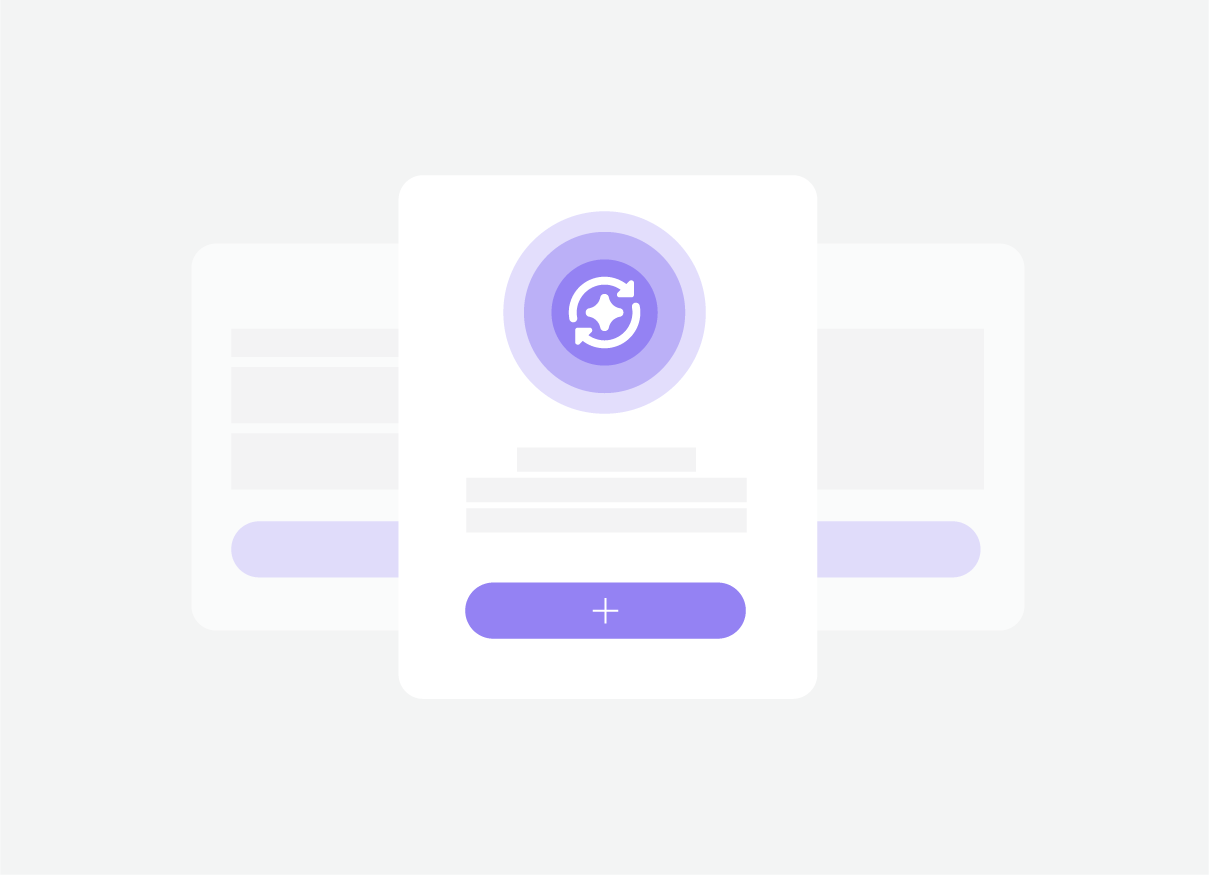
There was a time when personalization meant simply inserting your name into an email subject line or greeting you by your first name on a website. It felt special, but honestly, it was just the tip of the iceberg. Fast forward to today, and personalization has evolved into something far more intricate and impactful. Powered by AI, businesses are now crafting customer experiences that feel like they’re made just for you – every single time, in real time.
The Netflix Magic: Beyond Just Recommendations
Think about your Netflix account. Have you ever noticed how the recommendations change based on your viewing habits? Maybe one night you’re watching a gripping crime series, and the next, you’re in the mood for a light comedy.
Netflix’s AI doesn’t just stop at basic suggestions. It tracks your behavior – how long you spend on a show, where you pause, and even what you skip. It analyzes all of that and adapts. What’s even cooler is that the recommendations adjust depending on who’s watching. Watching a family movie night with your loved ones? Your profile shifts to show more family-friendly options.
AI is constantly learning, ensuring the platform feels like it’s always in sync with your mood and preferences. It’s no longer a static experience, but a dynamic, evolving journey that feels like Netflix just knows you.
Spotify’s Personalized Soundtrack: AI Gets You
And it doesn’t end there. If you’ve ever used Spotify, you’ve probably been amazed at how the app seems to know exactly what you want to listen to. From the daily mix to the “Made for You” playlists, Spotify’s AI works tirelessly behind the scenes, analyzing what you play, how often you play it, and even your skipping habits.
Those playlists that perfectly match your mood or introduce you to a new artist you didn’t know you needed? That’s all AI working its magic, curating the perfect soundtrack for your life. What might seem like an eerie coincidence is actually a sophisticated hyper-personalization system designed to ensure every listening experience feels tailored just for you.
Personalized Future of Healthcare Technology
While entertainment is enjoying its AI-powered personalization, other industries are tapping into the potential of this technology too – and healthcare is a prime example. In the world of medicine, AI is transforming patient care by offering tailored treatments instead of a one-size-fits-all approach.
Companies like Tempus and IBM Watson Health are leading the charge by using AI to analyze everything from genetic data and medical histories to lifestyle choices. This depth of personalization is helping doctors create treatment plans designed specifically for each individual.
Imagine this: instead of prescribing a standard medication, doctors now have the ability to offer therapies that are customized to fit a patient’s unique genetic makeup. This personalized treatment reduces side effects and increases the effectiveness of care.
And it doesn’t stop with just treatment and effective healthcare delivery. AI is turning healthcare into a proactive service, catching health issues early before they even develop. It’s not just about reacting to problems anymore; it’s about preventing them altogether, thanks to AI’s precision. In a way, healthcare is undergoing a massive shift, from guessing what might work for a patient to knowing exactly what will work. It’s making medicine more human, more intuitive, and most importantly, more effective.
5. Extended Reality (XR) – AR, VR, and MR Innovations
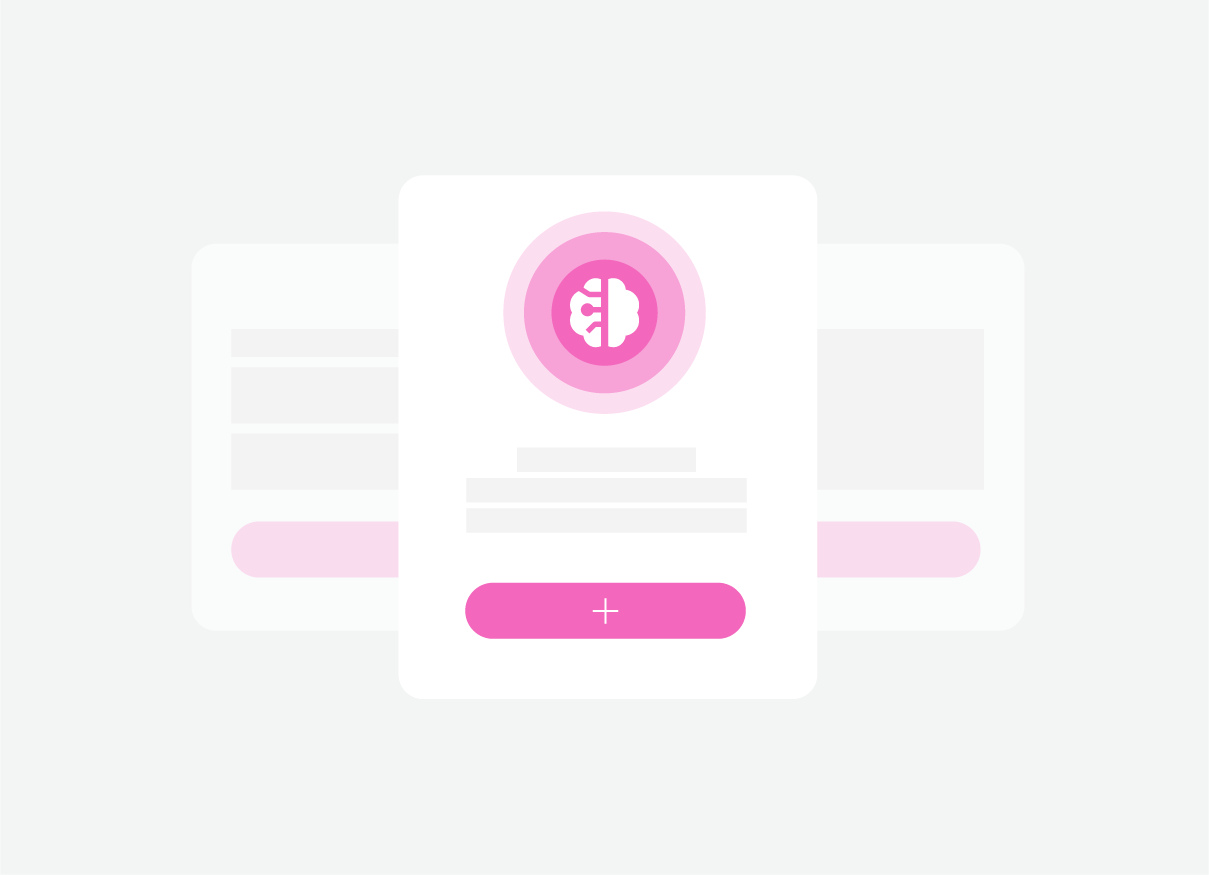
When most people think about virtual reality, their first thought probably goes straight to gaming. But the truth is, VR is just one piece of the puzzle. Welcome to the world of Extended Reality (XR), which brings together augmented reality (AR), virtual reality (VR), and mixed reality (MR) – and it’s far more than just a fun distraction. XR is rapidly changing the way businesses operate, train, and interact, bringing innovative solutions that stretch beyond the gaming world and into everyday industries.
VR Training: Reducing Errors, Speeding Up Production
Take Boeing, for instance. Instead of just relying on traditional methods to train engineers, they’re using virtual reality to simulate real-world environments. Engineers can practice assembling aircraft components in a virtual space, which helps them make fewer mistakes in the real world.
It’s a safe, immersive environment where they can repeat tasks until they get them right – all while speeding up the learning process. This has reduced the need for physical prototypes and has led to faster, more efficient production times. What once took weeks of training can now be done in a fraction of the time, and engineers gain a hands-on experience without risking costly errors.
AR for Retail: Try Before You Buy
Now, let’s talk about augmented reality (AR). If you’ve ever browsed IKEA’s app, you’ve probably seen how AR lets you “place” furniture in your home before you buy it. It’s like having a virtual showroom in your living room. Instead of imagining how that sofa might fit into your space or whether that bookshelf will clash with your wall color, AR lets you visualize the product exactly where it’ll go.
Customers can make decisions with confidence, seeing how the furniture fits within their space, ensuring the purchase is the right choice. This not only boosts customer satisfaction but also helps retailers reduce returns, as shoppers feel more assured in their decisions.
Virtual Offices as Technology Trends in Business
And then there’s the idea of the office of the future. With mixed reality (MR), which blends elements of both AR and VR, teams can now collaborate in virtual environments. Imagine a meeting where participants aren’t just talking into a screen – they’re interacting with 3D models, drawing on virtual whiteboards, and moving objects around in real-time, all from different corners of the world.
In a way, it’s like stepping into a shared workspace where geography is no longer an obstacle. These virtual offices could replace traditional meeting rooms and conference calls, allowing for a richer, more interactive experience than a simple Zoom call. This technology is quickly evolving, and soon, remote collaboration could feel as seamless as being in the same room.
6. Sustainable Tech and Green IT Solutions

Sustainability is a business priority now. As concerns about the environment grow, companies are now facing the harsh realities of the tech industry’s environmental impact on the planet. Data centers are energy-hungry giants, and e-waste is piling up faster than we can recycle it. But amid these challenges, innovation is paving the way for greener, more sustainable tech solutions. Companies are taking action to reduce their carbon footprints and create a more sustainable future for all.
Carbon-Neutral Cloud Computing: Leading the Way
Take Google and Microsoft, for example. Both giants are making major strides in sustainability with their carbon-neutral cloud computing efforts. Google has committed to running its data centers on 100% renewable energy, and it’s even working to make every transaction on Google Cloud carbon-free.
Microsoft, not to be outdone, has set ambitious goals on climate change, aiming to remove all the carbon it has ever emitted since its founding in 1975 by 2050. This focus on clean energy is shifting the tech world’s approach to cloud services, showing that large-scale tech infrastructure can go green without sacrificing performance or efficiency. These companies aren’t just reducing their emissions – they’re making it easier for other businesses to adopt carbon-neutral operations too.
Biodegradable Electronics: Tackling E-Waste
E-waste is another massive problem that the tech industry is trying to solve. Our reliance on electronics means tons of outdated gadgets end up in landfills each year, adding to the growing problem of electronic waste. But startups are stepping up to create biodegradable electronics, an innovation that could revolutionize how we handle old devices.
These eco-friendly gadgets are designed to break down naturally, preventing toxic chemicals from leaching into the environment. It’s a promising step forward, ensuring that even the tech we rely on daily won’t contribute to a polluted planet. This shift toward biodegradable materials is a sign that the industry is ready to rethink how products are made, used, and discarded.
The Circular Tech Economy: Refurbish, Repurpose, Repeat
In addition to creating greener products, companies are embracing the concept of a circular tech economy. Instead of tossing out old hardware, businesses are finding ways to refurbish and repurpose devices, giving them a second (or even third) life. Apple, for instance, is committed to using 100% recycled rare earth elements in its products.
This effort reduces the need for mining, which can be harmful to the environment, and ensures that valuable materials are reused rather than wasted. What’s more, the company has created a robot called Daisy, which disassembles old iPhones to recover the precious materials inside. By extending the lifecycle of devices, companies are not only reducing waste but also creating a more sustainable and cost-effective way to do business.
7. Next-Gen Cybersecurity and Zero Trust Architecture
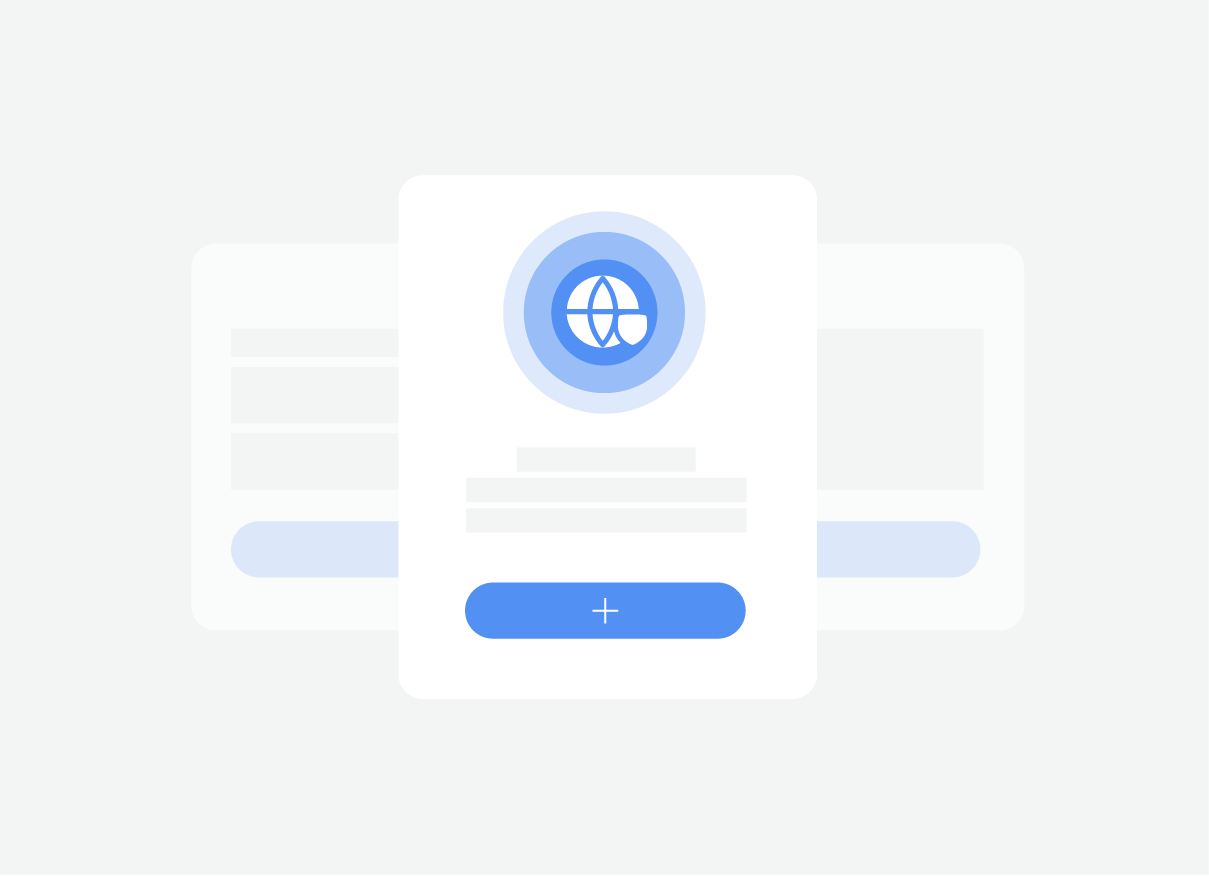
Cyber threats are evolving at a pace that keeps security experts on their toes. As technology grows more sophisticated, so do the tactics of cybercriminals. What worked yesterday simply won’t cut it today, and traditional security models are increasingly vulnerable. This is where Zero Trust Architecture (ZTA) steps in – a next-generation approach that’s changing the game in cybersecurity.
The Zero Trust Model: No One Is Trusted, Ever
Zero Trust is a bold shift in how businesses think about security. The basic idea? Trust no one, no matter where they are or what device they’re using. Imagine you’re at an exclusive club. Instead of just checking your ID at the door and assuming you’re good to go, the digital bouncer continues to check you at every step – making sure that every move you make within the club is authorized.
Similarly, Zero Trust requires continuous verification for every access request. Whether someone’s trying to log into a company system from a device on-site or remotely from another country, their credentials and behavior are constantly scrutinized.
Companies like Google have already adopted this model, implementing strict policies where users, devices, and even network traffic must be continually verified. If something doesn’t seem right, access is denied.
This approach dramatically reduces the risk of breaches, especially when employees are working remotely or using personal devices to access company networks. It’s a more vigilant, proactive form of cybersecurity that’s designed to adapt in real-time as new risks emerge.
AI-Powered Security: Detecting Threats Before They Strike
But Zero Trust doesn’t stand alone. It’s being supercharged with artificial intelligence to create even more robust, real-time protection. AI-powered security systems can detect anomalies and potential threats before they even have a chance to cause damage.
These systems don’t just react to threats after the fact – they predict and prevent them in advance. They can spot patterns of suspicious activity, learn from past incidents, and automatically adjust security protocols to match evolving risks. It’s like having a digital security guard that gets smarter with every encounter, always staying one step ahead of the bad actors.
With cyberattacks costing businesses billions every year, there’s no question that the old ways of securing networks and data are no longer sufficient. The move to Zero Trust isn’t just an option – it’s becoming a necessity for any organization that wants to protect its digital assets from the ever-growing number of cyber threats.
8. Blockchain Beyond Crypto – Data Security and Trust

When most people hear “blockchain,” the first thing that comes to mind is Bitcoin and other cryptocurrencies. But in reality, blockchain technology is far more than just a tool for digital currencies. It’s reshaping industries across the globe by offering a new way to improve security, transparency, and trust. This decentralized ledger technology is revolutionizing everything from supply chains to healthcare, offering solutions that go beyond financial transactions.
Blockchain in Supply Chains: Ensuring Transparency and Authenticity
One of the most powerful uses of blockchain is in supply chain management. Traditionally, tracking goods as they move from manufacturer to retailer has been a complex process that leaves room for fraud and errors. Enter blockchain, which creates an immutable, transparent record of every transaction. With blockchain, businesses can track products in real time, ensuring that each step in the supply chain is verifiable and tamper-proof.
For example, IBM’s Food Trust blockchain has given consumers the ability to trace the journey of their food from farm to table. Imagine being able to scan a product in the grocery store and instantly see where it came from, how it was produced, and if it met certain safety standards along the way.
This kind of transparency has enormous benefits, especially in industries where product authenticity is crucial, like pharmaceuticals or luxury goods. By ensuring the integrity of each product’s journey, businesses can reduce the risk of counterfeit products and reassure customers that what they’re buying is legitimate.
Verifying Drug Authenticity: A Matter of Life and Death
The healthcare industry, in particular, is seeing the power of blockchain in action. When it comes to pharmaceuticals, the stakes couldn’t be higher. Fake or counterfeit drugs can have devastating consequences, and ensuring the authenticity of medications is critical. Blockchain provides a secure, transparent way to verify the origin of each drug, track its movement through the supply chain, and ensure it hasn’t been tampered with along the way.
Take the example of a life-saving medication being shipped from a manufacturer to a hospital. Using blockchain, healthcare providers can verify that the drug is the real deal, ensuring its safety and effectiveness.
In this case, the blockchain doesn’t just add efficiency – it saves lives. This level of trust and accountability is essential in industries where security is paramount, and blockchain offers an elegant solution that can’t be easily hacked or altered.
📚Read also: AI Insurance Claims Processing Guide 2025
9. Quantum Computing Milestones
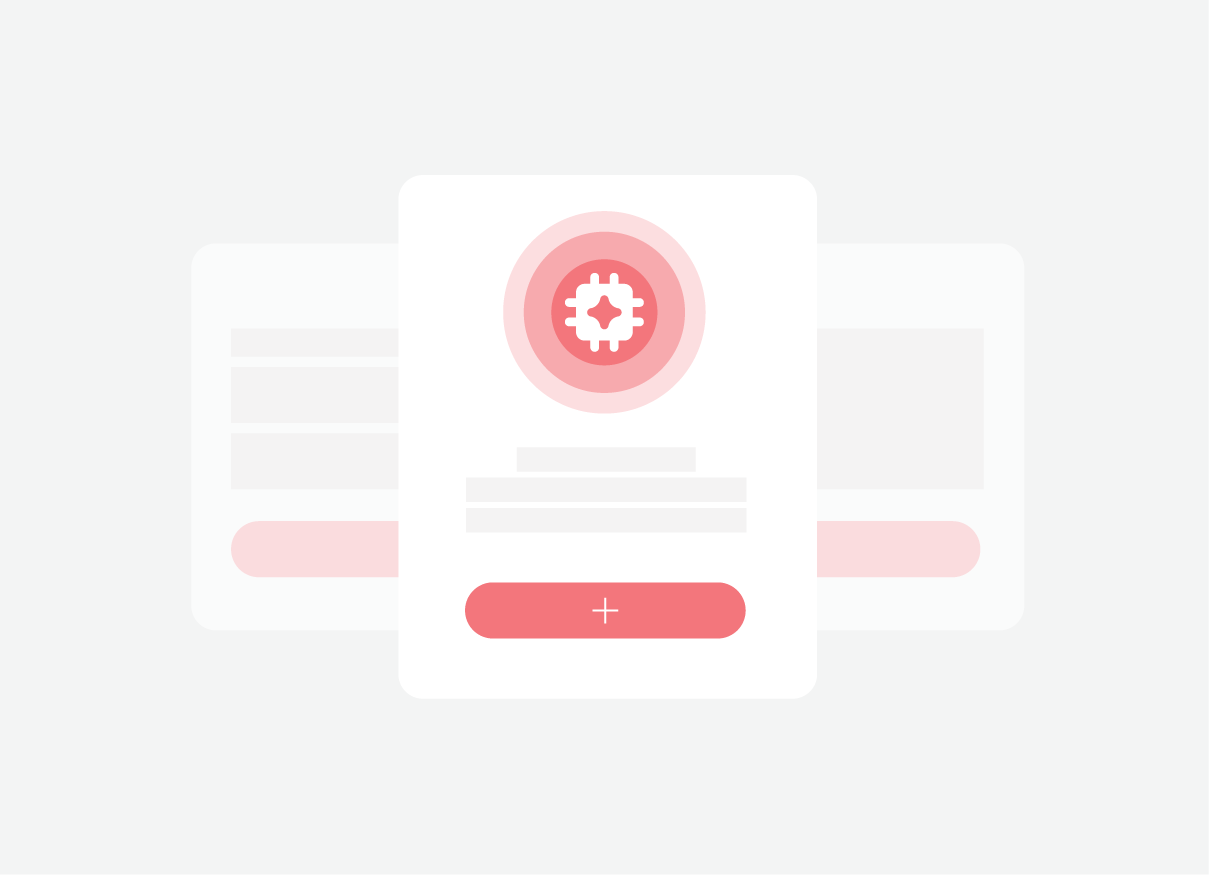
Quantum computing might sound like something straight out of a sci-fi novel, but the truth is, it’s closer to becoming a reality than ever before. For years, scientists and engineers have dreamed of creating machines that can harness the strange and powerful principles of quantum mechanics to solve problems far beyond the reach of today’s classical computers.
Now, with companies like Google, IBM, and ambitious startups like Rigetti leading the charge, the race to build quantum processors is on – and the implications for industries everywhere are nothing short of revolutionary.
Why Quantum Computing Matters
So, why does quantum computing matter? Classical computers, the ones most of us use every day, are based on bits that process information as either 0s or 1s. They are fast, powerful and capable of handling a lot of tasks, but their capabilities are still limited when it comes to incredibly complex problems.
Quantum computers, on the other hand, use quantum bits – or qubits – which can represent multiple states at once, thanks to the strange nature of quantum physics. This enables them to process vast amounts of data and perform calculations that would take classical computers years or even centuries to solve.
For businesses, this means that quantum computing could open up entirely new frontiers for innovation, from solving logistical challenges to optimizing financial strategies. It’s not just about making computers faster – it’s about solving problems that we never thought possible to solve.
A New Era of Investment Strategies
In the world of finance, the potential of quantum computing is already sparking excitement. Firms like JPMorgan Chase and Goldman Sachs are exploring how quantum algorithms can be used to optimize investment strategies, manage risks, and even predict market behavior with much greater accuracy.
Traditional models often rely on approximations or simple simulations of financial systems, but quantum computing has the potential to process and then analyze data from the immense complexity of global markets in real time.
Imagine a quantum computer analyzing vast datasets in seconds, identifying patterns that would take months for human analysts to detect. This could give investors a competitive edge, allowing them to make more informed, data-driven decisions. The possibilities are vast, and financial institutions that start investing in quantum computing research now will be well-positioned to lead in the next wave of market innovation.
Accelerating Drug Discovery
Healthcare is another industry poised to benefit from quantum computing. Researchers have long struggled with the complexity of simulating molecular structures and predicting how new drugs will interact with the human body.
Traditional computers just don’t have the power to simulate these massive, intricate systems in detail. But quantum computers, with their ability to handle vast datasets and complex simulations, could accelerate drug discovery by years, if not decades.
Companies like IBM are already working on using quantum computing to simulate molecular interactions, potentially speeding up the process of discovering new treatments for diseases like cancer, Alzheimer’s, and more. By accelerating the discovery and testing phases, quantum computing could revolutionize the pharmaceutical industry, making it easier to develop life-saving drugs and therapies faster and more cost-effectively.
10. Autonomous Systems and Robotics

In the not-so-distant past, robots were a rare sight, confined mostly to science fiction movies or the most advanced manufacturing lines. But today, autonomous systems and robotics are moving from fiction to reality, quietly reshaping the way businesses operate across industries.
From warehouses to hospitals to the open road, AI-driven machines are handling tasks that were once done by humans – and they’re doing it faster, more accurately, and sometimes more safely.
Robots in Warehouses
Take Amazon, for example. The retail giant has revolutionized logistics with its fleet of autonomous robots. These machines zoom through Amazon’s massive fulfillment centers, picking up products, sorting inventory, and even moving them across the floor with remarkable speed and precision.
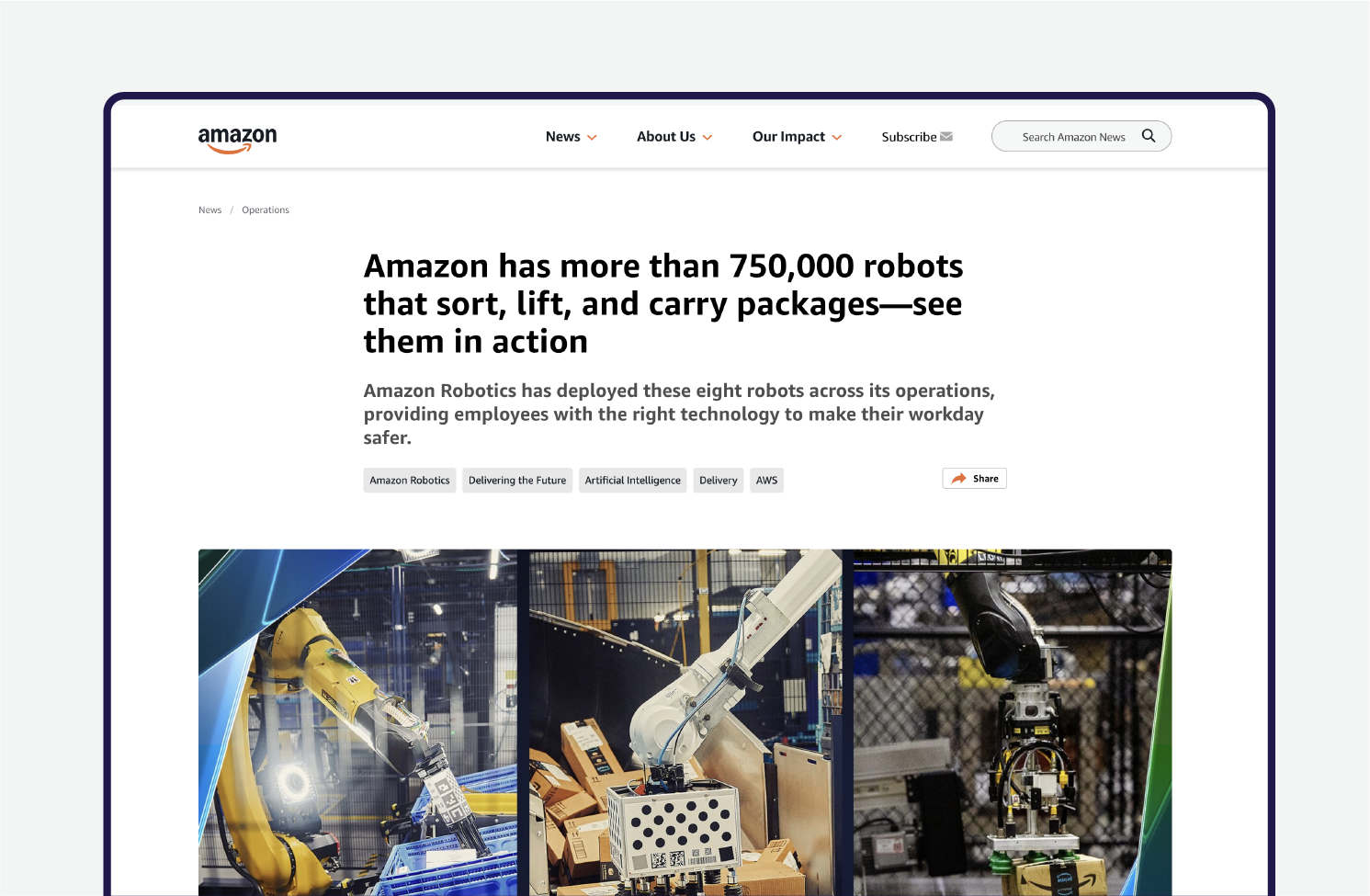
What used to be an arduous, labor-intensive process is now automated, allowing Amazon to fulfill orders in record time. These robots work around the clock, optimizing space and ensuring that products are always in the right place when customers need them. And it’s not just about efficiency – it’s about scalability. As online shopping continues to boom, robots are helping companies like Amazon meet the growing demand without breaking a sweat.
Robotic Assistance in Healthcare
While robots are helping move inventory, they’re also taking on a much more critical role in healthcare. Hospitals are using robotic assistants for surgeries, patient care, and even administrative tasks. Surgical robots, like the da Vinci system, allow doctors to perform minimally invasive procedures with higher precision and less risk.
These robots offer enhanced flexibility, enabling doctors to make more precise movements, which can lead to faster recovery times for patients and fewer complications during surgery. Beyond the operating room, robots are also being used to assist in patient care, such as delivering medications, cleaning rooms, and even assisting with mobility.
The integration of robots into healthcare systems isn’t just about improving efficiency – it’s about improving outcomes. In some cases, robots can perform tasks that are too delicate or too repetitive for human hands, giving medical professionals the ability to focus on higher-level care.
Autonomous Delivery
One of the most exciting frontiers for autonomous systems is in logistics. Self-driving trucks, drones, and delivery robots are already beginning to change how goods are transported, reducing costs and speeding up delivery times.
Companies like Tesla, Waymo, and Nuro are making huge strides in autonomous vehicle technology, developing everything from self-driving delivery trucks to drones that can drop packages at your doorstep.
Technology Trends Driving Business Transformation in 2025
Technology is moving fast, and businesses that keep up are seeing major growth, while those sticking to old methods are struggling to stay relevant. In 2025, staying competitive means being flexible, making smart choices, and staying open to change.
Digital Transformation and Agility
Digital transformation used to mean shifting paperwork online. Now, it’s about making businesses faster, more efficient, and ready to respond to change. AI, automation, and cloud computing are helping companies stay on top of market shifts and customer demands.
Retail giants like Walmart use AI to manage inventory, predict demand, and automate logistics, cutting waste and keeping shelves stocked. Remote and hybrid work models continue to be the norm, with businesses relying on tools like Microsoft Teams and Slack to keep employees connected no matter where they are. The companies leading the way in 2025 aren’t necessarily the biggest – they’re the ones that can pivot the fastest.
Enhanced Customer Experience
People expect businesses to do more than just offer a good product. They want services that are personalized, fast, and effortless. AI-powered chatbots, virtual assistants, and predictive analytics are making that possible.
Look at Starbucks. Their app suggests drinks based on previous orders, the weather outside, and even the time of day. Airlines use AI to send real-time travel updates, predict delays, and offer personalized deals. Businesses that focus on improving customer experience will build strong loyalty, while those that don’t will lose out to competitors that do it better.
Data-Driven Decision Making
Businesses are sitting on mountains of data, but raw numbers alone aren’t useful. AI helps turn all that information into smart decisions, with data analysis revealing patterns and trends that would be impossible to spot manually.
Banks like JPMorgan Chase use AI to detect fraud before it happens. Retailers track shopping habits to adjust pricing and promotions. Hospitals analyze patient data to improve care and reduce costs. Companies that know how to use their data effectively will be the ones making the best moves in 2025.
Competitive Advantage
Companies that embrace AI, automation, and emerging tech aren’t just keeping up with the competition – they’re getting ahead. Businesses that resist change will find themselves struggling to stay in the game.
Tesla updates its cars with new software remotely, so they improve over time instead of becoming outdated. Amazon continuously refines its supply chain with AI, ensuring faster and more efficient deliveries In 2025, businesses that stay curious, experiment with new tech, and adapt quickly will be the ones leading the way.
Sector-Specific Trends – Brief Insights into Key Industries
Technology is reshaping industries in ways we once only saw in sci-fi movies. From healthcare to insurance, innovation is making systems smarter, more efficient, and more customer-focused. Here’s a look at how two key industries are evolving in 2025.
Healthcare Technology Trends in 2025
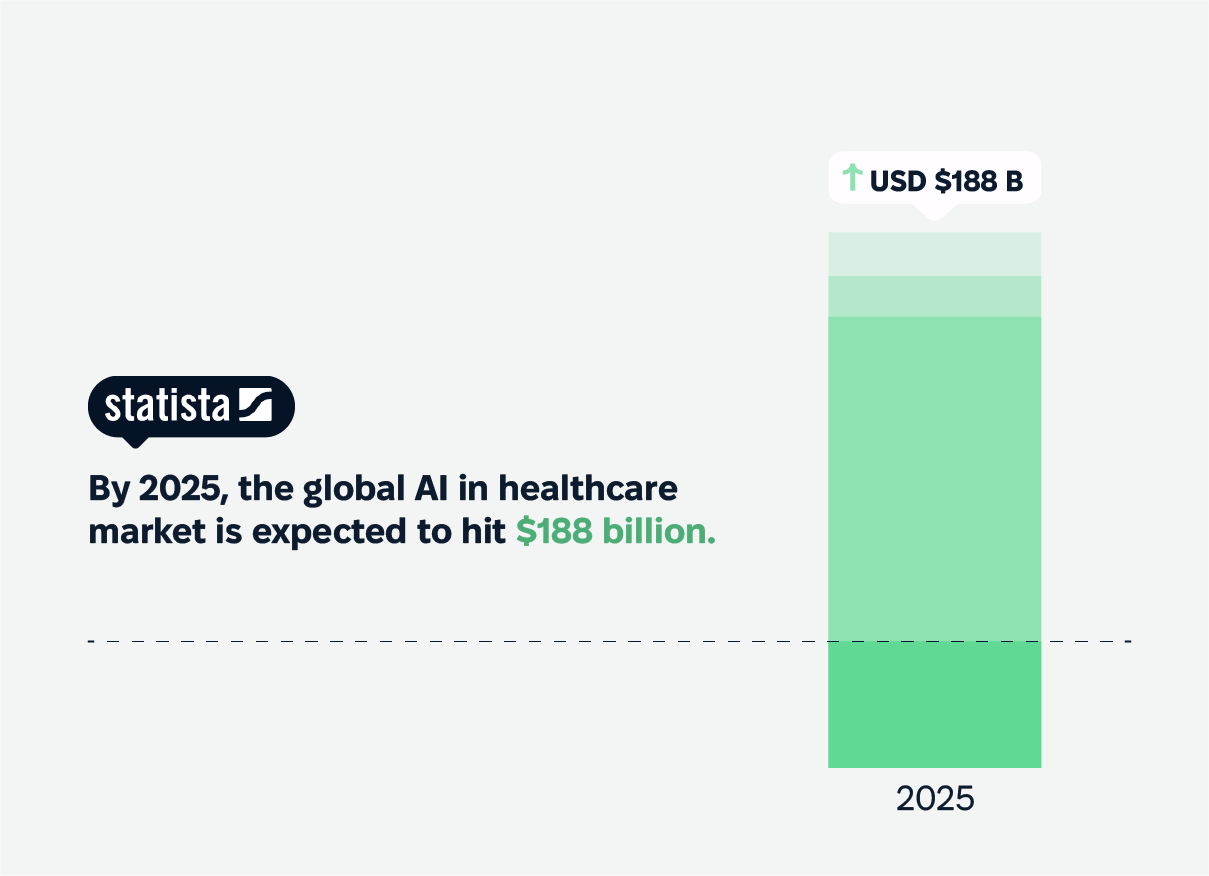
The digital health is undergoing a massive transformation, and the numbers prove it. By 2025, the global AI in healthcare market is expected to hit $188 billion, up from just $11 billion in 2021. From AI-powered diagnostics to wearable health trackers, technology is making healthcare smarter, faster, and more personalized than ever before.
AI-Assisted Diagnostics and Personalized Medicine
The healthcare industry is getting a major tech upgrade, and it’s making life easier for both doctors and patients. AI is playing a huge role in diagnostics, helping doctors catch diseases earlier and with greater accuracy.
Tools like Google’s DeepMind have already shown that AI can diagnose conditions like eye diseases as well as, or even better than, human specialists. Personalized medicine as the one of technology trends in healthcare industry is also taking off, using a patient’s genetic data to tailor treatments instead of relying on a one-size-fits-all approach.
Remote Patient Monitoring (RPM) and Telehealth Evolution
Remote patient monitoring (RPM) and telehealth are no longer just conveniences – they’re becoming essential. Wearable devices like the Apple Watch and Fitbits are keeping track of heart rates, oxygen levels, and even early signs of chronic illnesses, allowing doctors to intervene before things get serious. Hospitals and clinics are also adopting AI-driven telehealth platforms that offer 24/7 virtual consultations, helping people get medical advice without sitting in a waiting room for hours.
Data Interoperability and Healthcare Data Security
On the data side, healthcare is tackling one of its biggest challenges: interoperability. With patient records scattered across different systems, sharing data securely has been a nightmare. But with new health data standards and blockchain-backed security measures, hospitals and providers are finally making progress in ensuring seamless and safe data exchange. In 2025, expect a smoother, more connected healthcare experience that puts patient well-being first.
Insurance Technology Trends in 2025
The global InsurTech market is projected to hit $158 billion by 2030, up from just $7 billion in 2020. That’s a sign of how fast insurers are adopting AI, automation, and real-time data analytics to change everything from claims processing to policy pricing. In 2025, the insurance industry isn’t just about protection but about personalization, speed, and smarter risk assessment.
AI-Powered Claims Processing and Fraud Detection
The insurance industry is getting a long-overdue digital makeover, and AI is leading the charge. Claims processing, which used to take weeks, is now happening in minutes, thanks to AI-powered automation. Companies like Lemonade have set the standard, using AI chatbots to process claims almost instantly, making the traditional back-and-forth paperwork look ancient.
Fraud detection is also getting smarter. Insurance fraud costs the industry billions every year, but AI-driven analytics can now spot suspicious claims by analyzing vast amounts of data in real-time. This means fewer false claims slipping through the cracks and fairer pricing for honest policyholders.
Usage-Based Insurance and Hyper-Personalized Policies
One of the biggest shifts in 2025 is the rise of usage-based insurance. Instead of paying a fixed premium, people are now getting rates based on real-time data. Car insurance companies, for example, are using telematics to track driving habits – good drivers who brake smoothly and stick to speed limits get lower rates, while reckless drivers pay more. The same approach is showing up in health and life insurance, with wearable devices monitoring fitness levels to adjust premiums accordingly.
Digital Ecosystems – InsurTech Collaborations and Embedded Insurance
InsurTech collaborations and embedded insurance are also changing how policies are sold. More companies are embedding insurance into everyday purchases – buy a new phone, and a protection plan is seamlessly added at checkout. This is making insurance more accessible, convenient, and tailored to consumers’ needs, rather than being an afterthought filled with endless forms and fine print.
As 2025 unfolds, both healthcare and insurance are proving that the future isn’t just about adopting new technology – it’s about using it to create better, smarter, and more user-friendly experiences.
Preparing for the Tech-Driven Future
As we look toward 2025, it’s impossible to ignore the incredible pace at which technology is reshaping our world. From AI-driven personalization that understands our needs before we do, to blockchain making supply chains more transparent, to robots working alongside humans in warehouses and hospitals, the way we live and work is changing faster than ever. And it’s not just about improving what we already have – it’s about creating new possibilities that were once the stuff of dreams and creating from scratch.
But with all these exciting advancements comes a simple truth: to succeed, businesses must be ready to adapt. The companies that will thrive in this tech-driven future are the ones that stay curious, embrace change, and seek out new ways to solve old problems. Innovation is the key to navigating the complexities of a rapidly evolving world.
The landscape ahead may seem daunting, but the opportunities are just as vast. While it might be tempting to stick with familiar methods and technologies, doing so could mean missing out on breakthroughs that have the potential to transform industries.
As technology continues to evolve, businesses will need to evolve with it – constantly reassessing their strategies, embracing new tools, and remaining open to change. This doesn’t just require a shift in mindset; it’s about a commitment to continuous growth and exploration.
The good news is that we’re not in this alone. There’s an entire world of experts, innovators, and creators ready to help guide the way. Whether it’s through partnerships, collaborations, or even learning from the successes (and failures) of others, there’s a wealth of resources available for those brave enough to take the plunge.
The future won’t wait, and neither should we. The next chapter is waiting – are you ready to write it?
FAQs
1. What are the biggest tech trends for 2025?
The biggest tech trends for 2025 include AI-powered automation, blockchain technology, quantum computing, and extended reality. These innovations are revolutionizing industries by enhancing efficiency, security, and user experiences, allowing businesses to stay ahead in a rapidly evolving market.
2. What is the role of AI in business innovation?
AI is transforming business by automating processes, improving decision-making, and enhancing customer experiences. From personalizing marketing strategies to streamlining operations, AI helps companies stay competitive in a rapidly changing market.
3. How does blockchain improve data security?
Blockchain enhances data security by providing a decentralized, transparent ledger that ensures every transaction is securely recorded and immutable. This reduces the risk of fraud, hacking, and unauthorized data tampering, making it especially valuable in industries like finance and healthcare.
4. What are autonomous systems, and how do they impact industries?
Autonomous systems, including robots and self-driving vehicles, are machines capable of performing tasks without human intervention. These technologies are revolutionizing industries like logistics, healthcare, and manufacturing by increasing efficiency, reducing costs, and improving safety.
5. What is Quantum Computing, and how will it affect businesses in the future?
Quantum computing uses qubits to perform complex calculations much faster than traditional computers. As the technology matures, it will unlock new opportunities in industries such as finance, healthcare, and logistics, helping businesses solve problems that are currently beyond the reach of classical computing.
6. How can businesses prepare for the tech-driven future?
To succeed in a tech-driven future, businesses must embrace innovation, stay adaptable, and continuously explore new technologies. By integrating advanced tools like AI, blockchain, and quantum computing, companies can improve operations, enhance customer experiences, and maintain a competitive edge.
7. How is digital health transforming the healthcare industry?
Digital health is transforming the healthcare industry by leveraging technologies like AI, wearable devices, and telehealth solutions. These advancements enable more personalized and efficient patient care, improve health data management, and facilitate remote monitoring, leading to better health outcomes and reduced operational costs.

